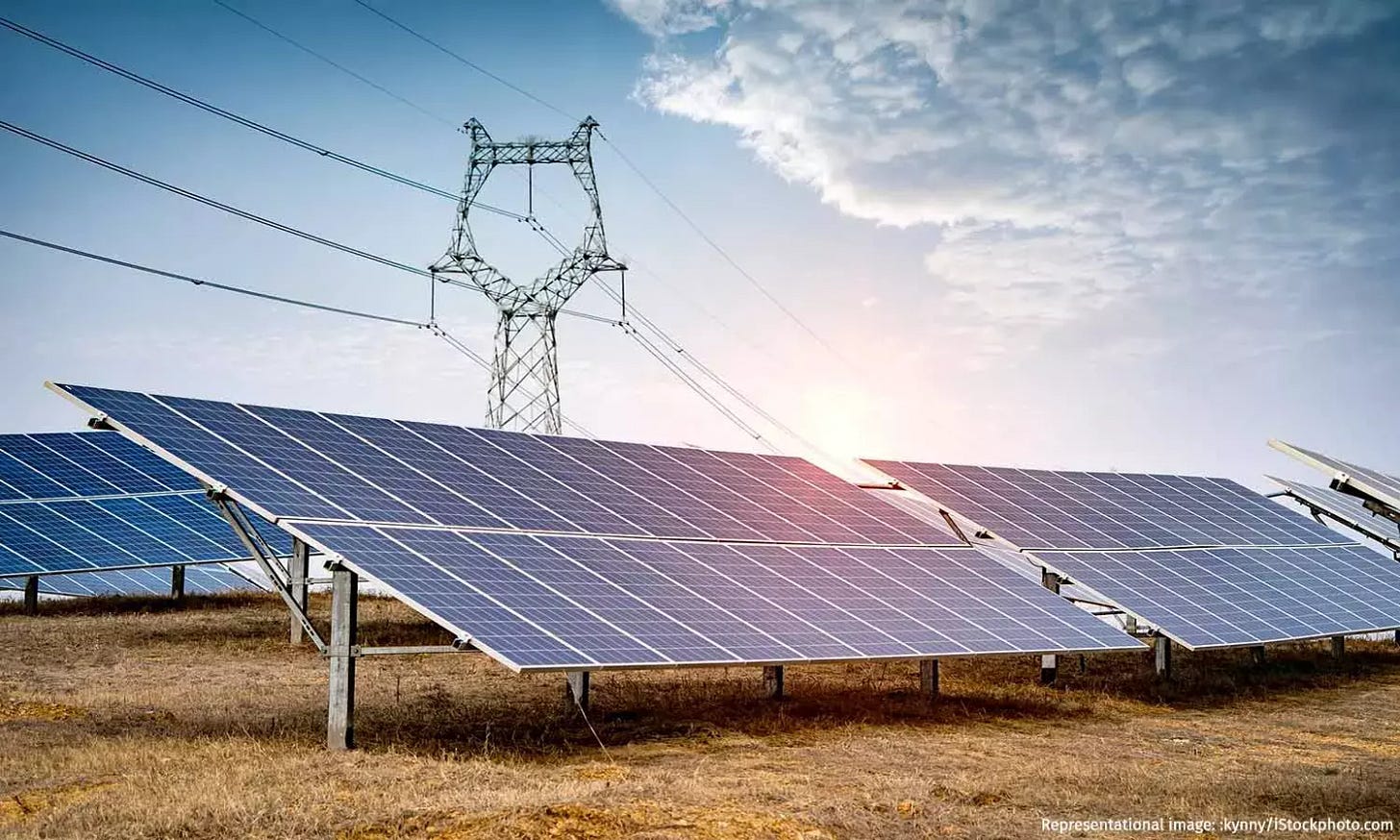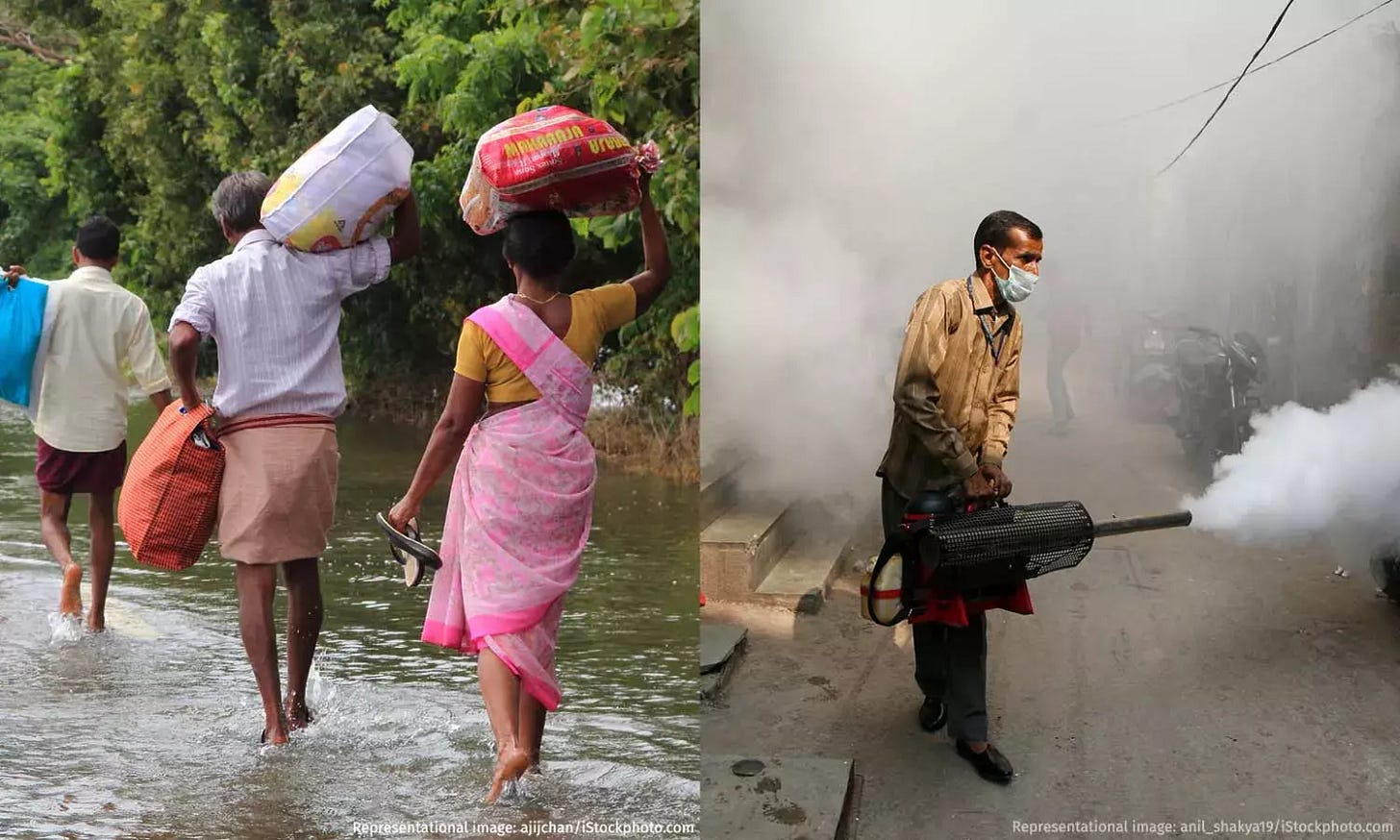The (Renewables) Generation Gap
This week, what’s next for India’s renewables journey, how dowry-related crimes are undercounted, and the health impacts of floods
Our stories this week focus on the gap between what’s measured and what citizens experience on the ground. From India’s renewables capacity to the pattern of dowry-related crimes and to the aftermath of flooding across several Indian states, it is critical to read between the lines to understand where we are in order to achieve our stated goals.
The Path to Harnessing Renewables
India’s energy mix is now evenly divided between fossil and non-fossil fuel sources. The latter now make up 50% of India’s 485 GW installed capacity, five years ahead of the target. This is a critical step in the country’s journey to cut emissions and eventually reach carbon neutrality.
But what’s concerning is that the actual power generation from non-fossil fuel sources–solar, wind, nuclear and large hydro–has increased only five percentage points in a decade even as capacity tripled. In 2014, 17% of India’s power consumption was through these sources, which has now increased to 22%--or 371 billion units. This means, more than 78% of actual power consumed in the country still comes from fossil fuel sources.
There are several reasons such as the lack of a generation target, low efficiency of renewable power plants, grid congestion, lack of adequate storage capacity, and inflexible power purchase agreements. Estimates suggest that the likely installed capacity by 2031-32 would be 900 GW--with about 617 GW of non-fossil fuel capacity. As we add more capacity, India needs to improve efficiency and storage capacity urgently, so as to harness non-fossil fuel sources and cut emissions, Tanvi Deshpande reports.
Dowry Crimes Underreported
A series of dowry deaths in the last two months brought the evil of dowry harassment back into focus. The National Crime Records Bureau publishes data on crimes, accidental deaths and suicides every year, but the latest available data are from 2022. That year, the country saw 6,450 dowry deaths and 13,479 dowry law violations. And while deaths have declined, cases under the Dowry Protection Act have increased 34% since 2014.
But research suggests that these numbers may be underestimates, for several reasons. First, women do not report dowry harassment due to fear of stigma, deep-rooted patriarchal attitudes, economic dependence, limited awareness and coercion. Second, a dowry death is more likely to be reported than harassment itself: Data show that in 2022, 15 states and Union territories registered more dowry deaths than harassment cases. Third, dowry deaths are often misreported as accidental deaths.
What this means is that thousands of Indian women are silently suffering everyday harassment in their marital homes for dowry. Absent reforms that enable better reporting and awareness of support systems, India is ill-equipped to tackle a problem the true scale of which is hidden. Kawinkumar B. examines the data.
How Extreme Weather Affects Health
Landslides and flooding have affected communities in several Indian states, with widespread damage to property, lives and livelihoods. When the waters abate, the contagion begins. Already, India is seeing extended transmission windows of vector-borne diseases such as malaria and dengue. Flooding also affects delivery of maternal and child health services, as my colleagues Nushaiba Iqbal and Tanvi Deshpande reported earlier this month. This becomes even more difficult in hilly terrain, where cloudbursts, landslides and extreme rainfall cut off road access.
The health systems are caught unawares–mosquito nets are needed much earlier, but remain out of stock, as we reported last year. Pregnant women develop complications from disruption of services, and contamination of drinking water sources leads to severe gastrointestinal diseases. And frontline health workers are often unable to address the mental health issues associated with weather-related displacement and disruption. India’s frontline healthcare must account for disaster planning, Arslan Bukhari reports from Srinagar.
That’s all we have for this week. We’ll be back next Saturday with more. If you like our work, please consider making a donation. Your support will help us continue to tell these critical stories from across the country.





